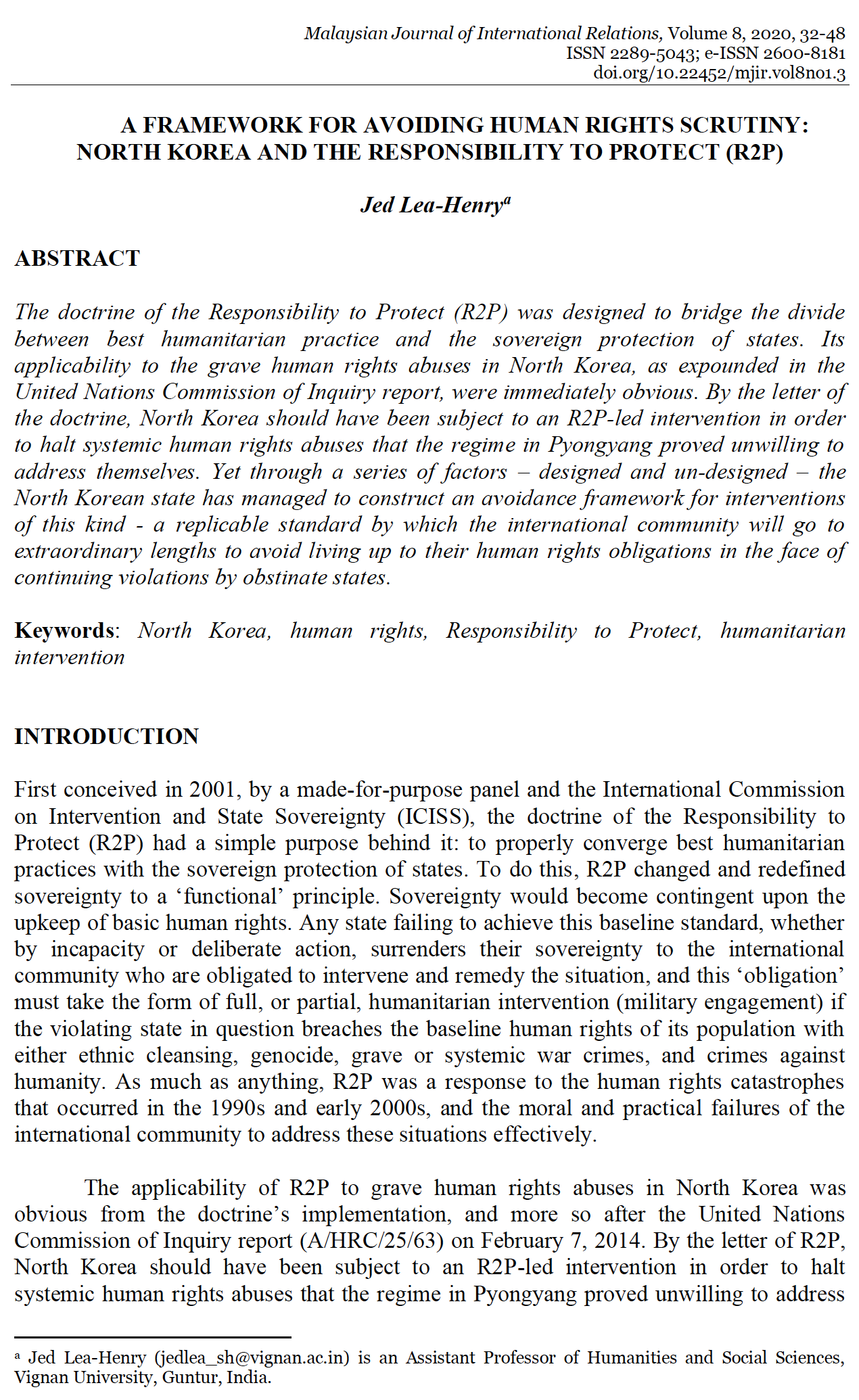A Framework for Avoiding Human Rights Scrutiny: North Korea and the Responsibility to Protect (R2P)
Main Article Content
Abstract
The doctrine of the Responsibility to Protect (R2P) was designed to bridge the divide between best humanitarian practice and the sovereign protection of states. Its applicability to the grave human rights abuses in North Korea, as expounded in the United Nations Commission of Inquiry report, were immediately obvious. By the letter of the doctrine, North Korea should have been subject to an R2P-led intervention in order to halt systemic human rights abuses that the regime in Pyongyang proved unwilling to address themselves. Yet through a series of factors – designed and un-designed – the North Korean state has managed to construct an avoidance framework for interventions of this kind - a replicable standard by which the international community will go to extraordinary lengths to avoid living up to their human rights obligations in the face of continuing violations by obstinate states.
